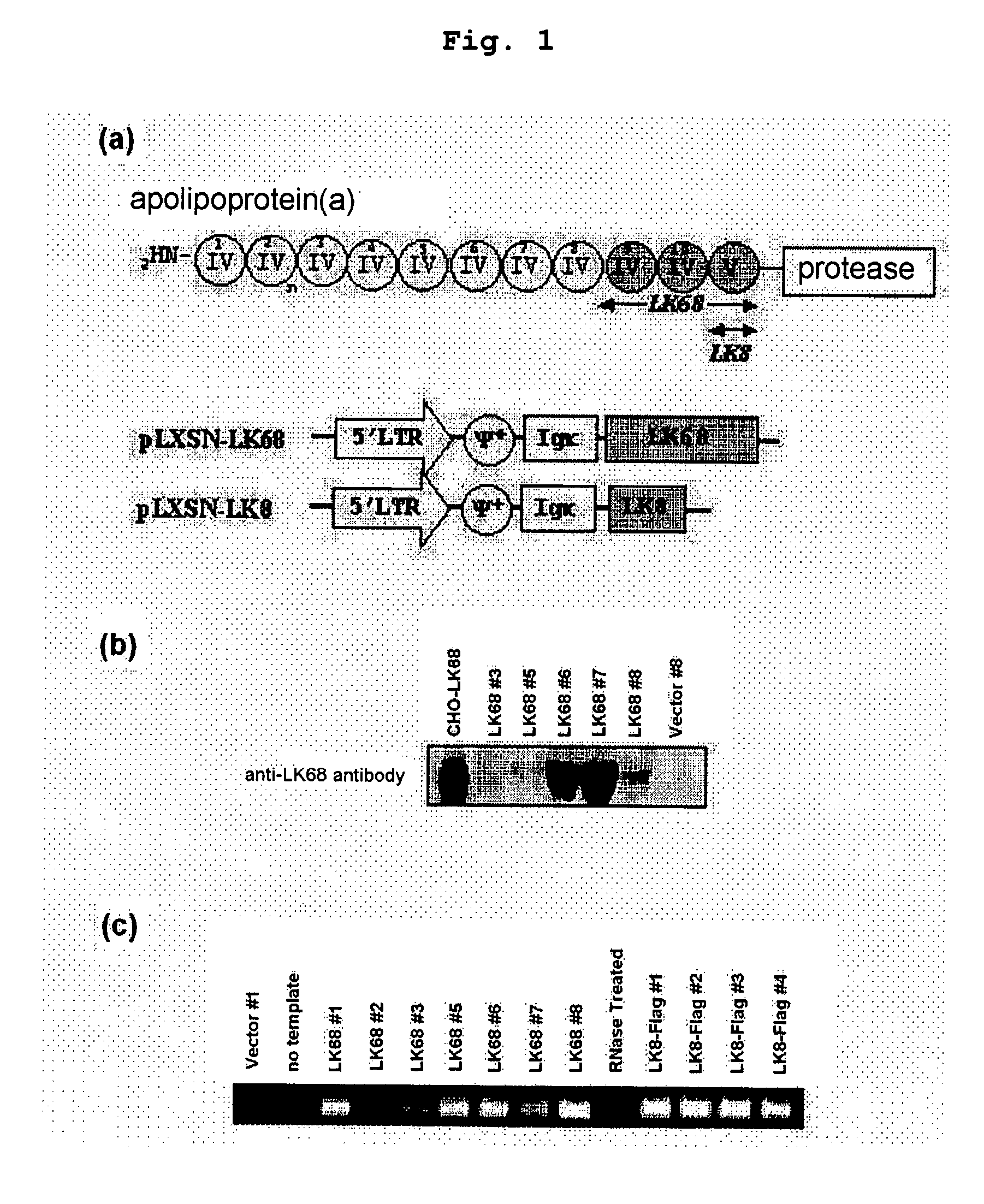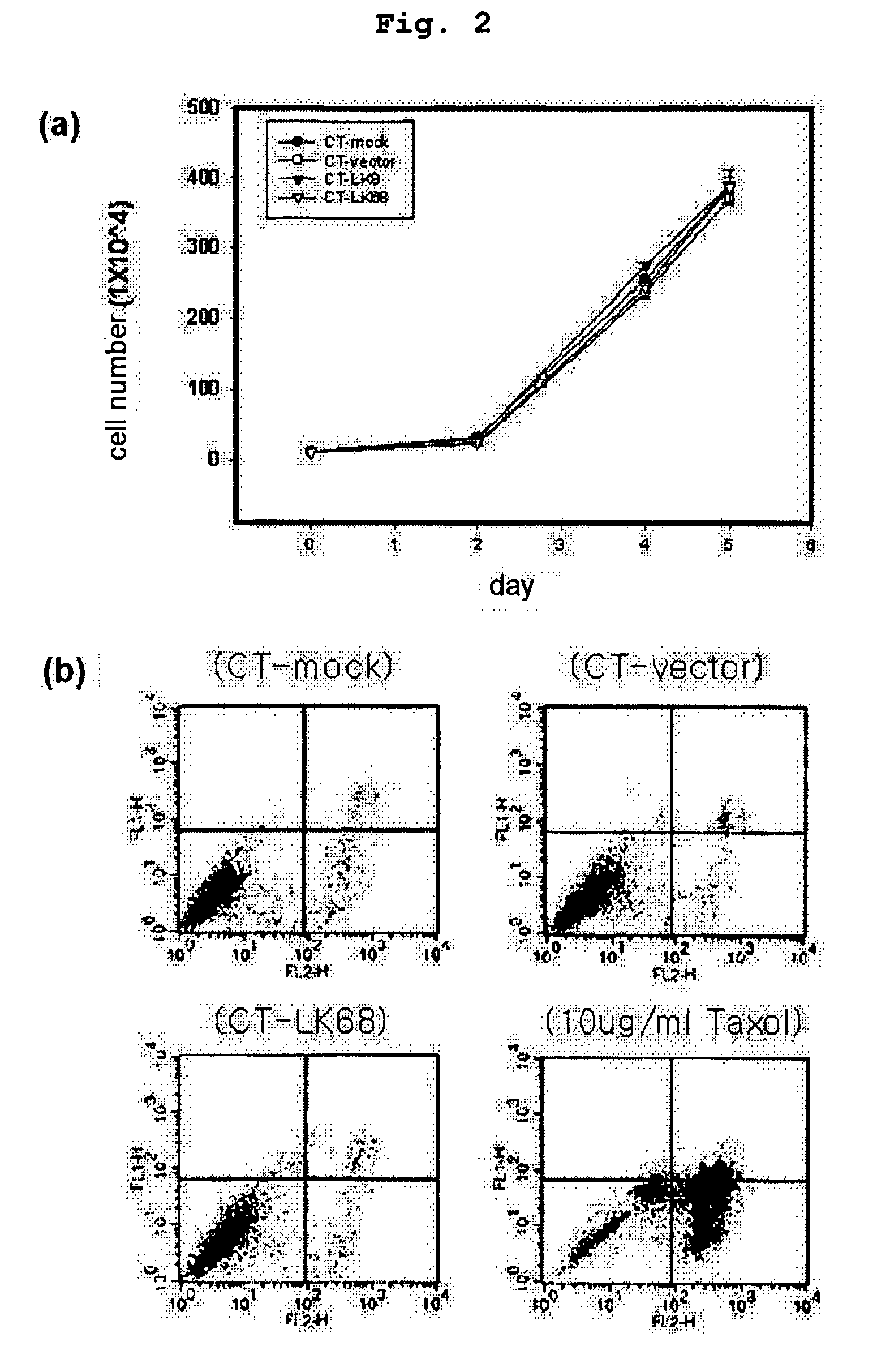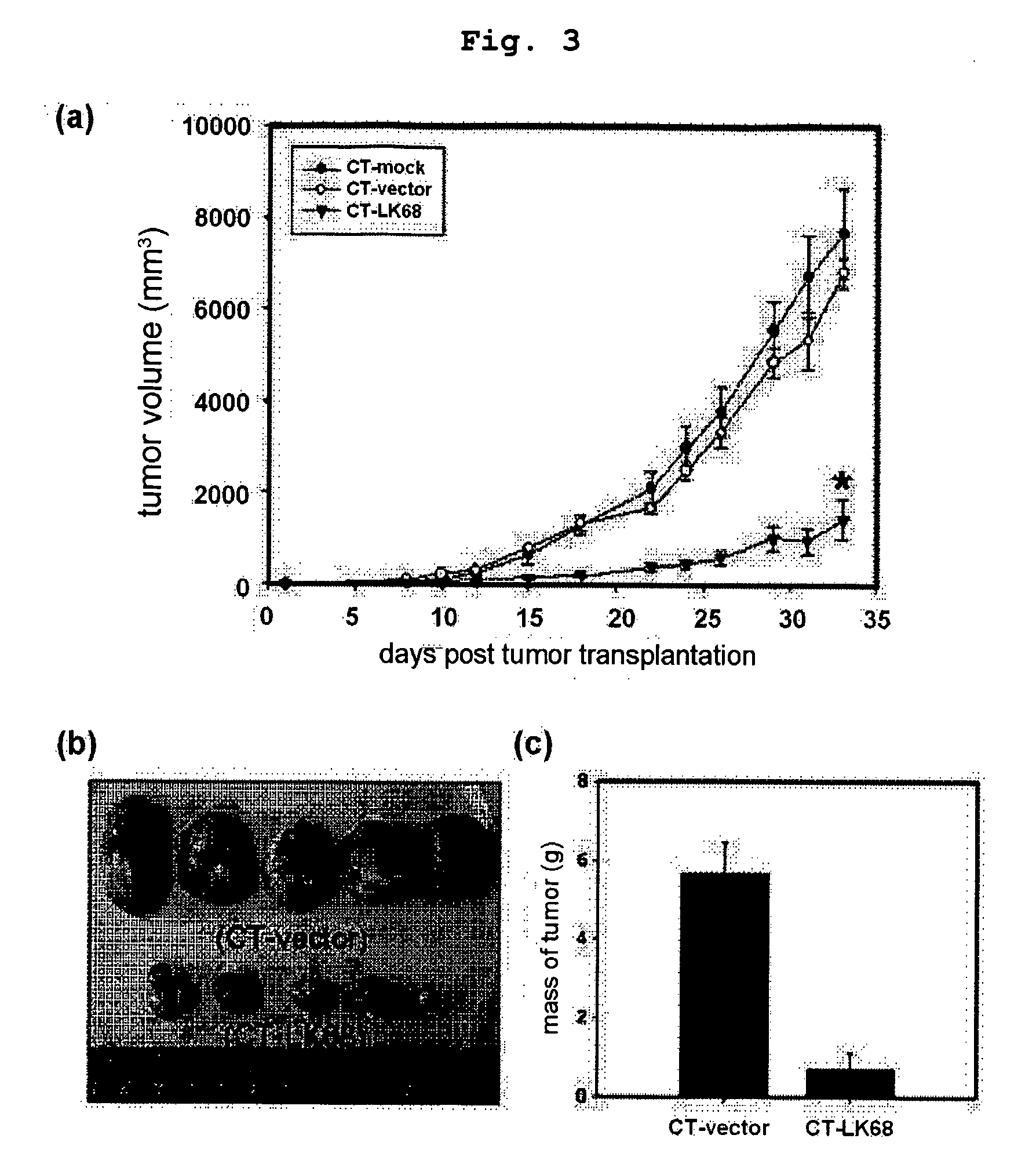Therapeutic agent for treatment of cancer comprising human apolipoprotein (a) kringles lk68 or lk8 genes as effective ingredient, and method for treating cancer using the same
a technology of kringles lk68 or lk8 gene and cancer, which is applied in the direction of biocide, animal repellents, drug compositions, etc., can solve the problems that patients with cancers who have been treated by chemotherapy have suffered serious side effects of systemic chemotherapy, motion sickness and vomiting, and cannot be properly treated by surgical operation
- Summary
- Abstract
- Description
- Claims
- Application Information
AI Technical Summary
Benefits of technology
Problems solved by technology
Method used
Image
Examples
example 1
Construction of a Colon Carcinoma Cell Line Expressing a Recombinant Protein LK68 or LK8
[0084] A gene encoding LK68 or LK8 protein was introduced into colon carcinoma cell line by using retrovirus. The construction procedure is precisely explained hereinafter.
Construction of Recombinant Vector Expressing LK68 or LK8 Protein
[0085] In order to obtain DNA fragments containing a gene encoding LK68 or LK8 protein (referred ‘LK68 or LK8 gene’ hereinafter) separated from human liver, which was represented by SEQ. ID. No. 1 and SEQ. ID. No. 2, PCR was performed with a sense primer of LK68 gene represented by SEQ. ID. No. 3 or a sense primer of LK8 gene represented by SEQ. ID. No. 4 and a sense primer of a virus vector represented by SEQ. ID. No. 5, by following procedure; denaturation at 94° C. for 5 minutes, then at 94° C. for 30 seconds, annealing at 56° C. for 30 seconds, extension at 72° C. for 1 minute, and the cycle was repeated 30 times, followed by additional reaction at 72° C. ...
example 2
The In Vitro Growth of CT-LK68 and CT-LK8 Cell Lines and Observation of Expected Apoptosis
[0089] In order to investigate the effect of the introduction of LK68 and LK8 genes in CT26 cells, the in vitro growth of CT-LK68 and CT-LK8 cell lines and expected apoptosis were observed.
[0090] Particularly, in order to observe the cell growth, CT-LK68, CT-LK8, CT-vector and CT-mock cell lines were distributed into each well of a 24 well tissue culture plate at the concentration of 2.5×104 cells / well. Then, the cells were cultured in DMEM medium (Dulbecco's modified Eagles medium) supplemented with 10% FBS (fetal bovine serum), at 37° C. in a 5% CO2 incubator. Time-dependent cell growth was measured by trypan blue exclusion counting method (Freshney, R. I., 1994, Culture of Animal Cells. A manual of Basic Technique, 3rd Ed. Wiley-Liss. New York, USA) for 5 days. As a result, the equal cell growth was observed in both cell lines in which LK68 or LK8 gene was inserted and a control cell line ...
example 3
Inhibition of a Solid Tumor Growth by the Insertion of LK68 Gene
[0092] Whether or not LK68 protein expressed in colon carcinoma cells could inhibit the growth of a solid tumor was investigated in allogenic transplanted tumor model.
[0093] Particularly, 5×105 CT-LK68 cells cultured in DMEM medium supplemented with 10% FBS were hypodermically injected in the center of dorsal of Balb / c mice (Charles River, Yokohama, Japan). Each group was composed of 8˜10 mice. After transplantation of a tumor, the growth of the tumor was observed for one month. Control group mice were transplanted with CT-vector or CT-mock cells instead of CT-LK68 cells. The tumor size was measured every three or four days and the volume of the tumor was calculated by the formula of (length×width2×0.52).
[0094] As a result, the tumor growth in CT-LK68 where LK68 gene was inserted was significantly inhibited, comparing to a control. Precisely, on the 33rd day from the transplantation of the cell line, tumor growth rat...
PUM
| Property | Measurement | Unit |
|---|---|---|
| Mass | aaaaa | aaaaa |
Abstract
Description
Claims
Application Information
 Login to View More
Login to View More - R&D
- Intellectual Property
- Life Sciences
- Materials
- Tech Scout
- Unparalleled Data Quality
- Higher Quality Content
- 60% Fewer Hallucinations
Browse by: Latest US Patents, China's latest patents, Technical Efficacy Thesaurus, Application Domain, Technology Topic, Popular Technical Reports.
© 2025 PatSnap. All rights reserved.Legal|Privacy policy|Modern Slavery Act Transparency Statement|Sitemap|About US| Contact US: help@patsnap.com



